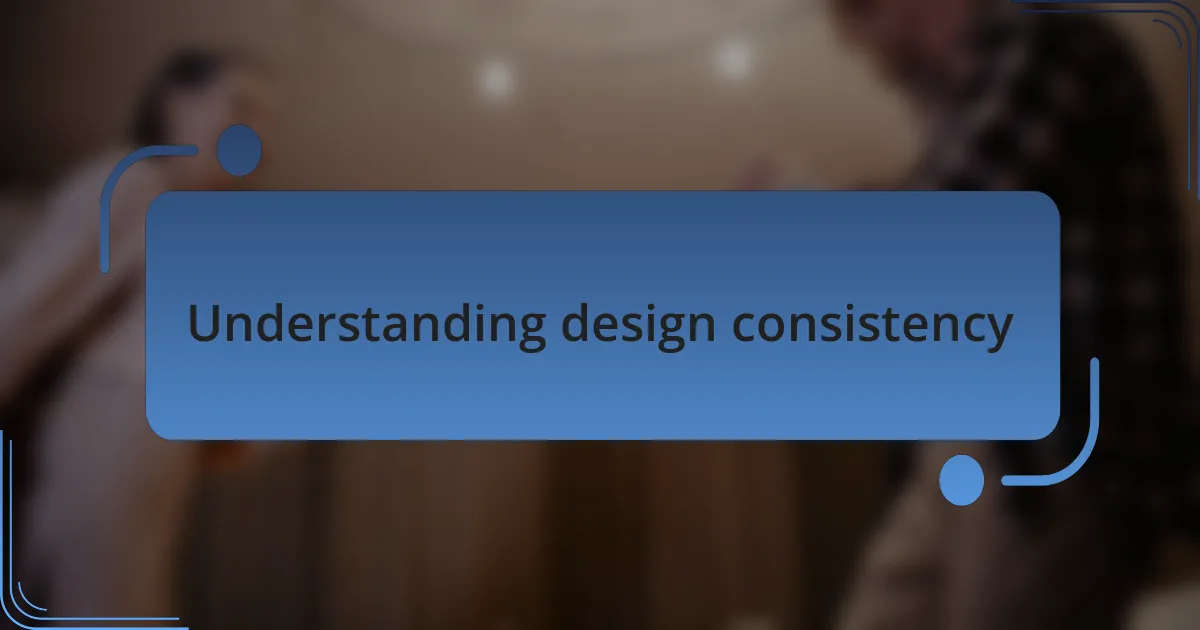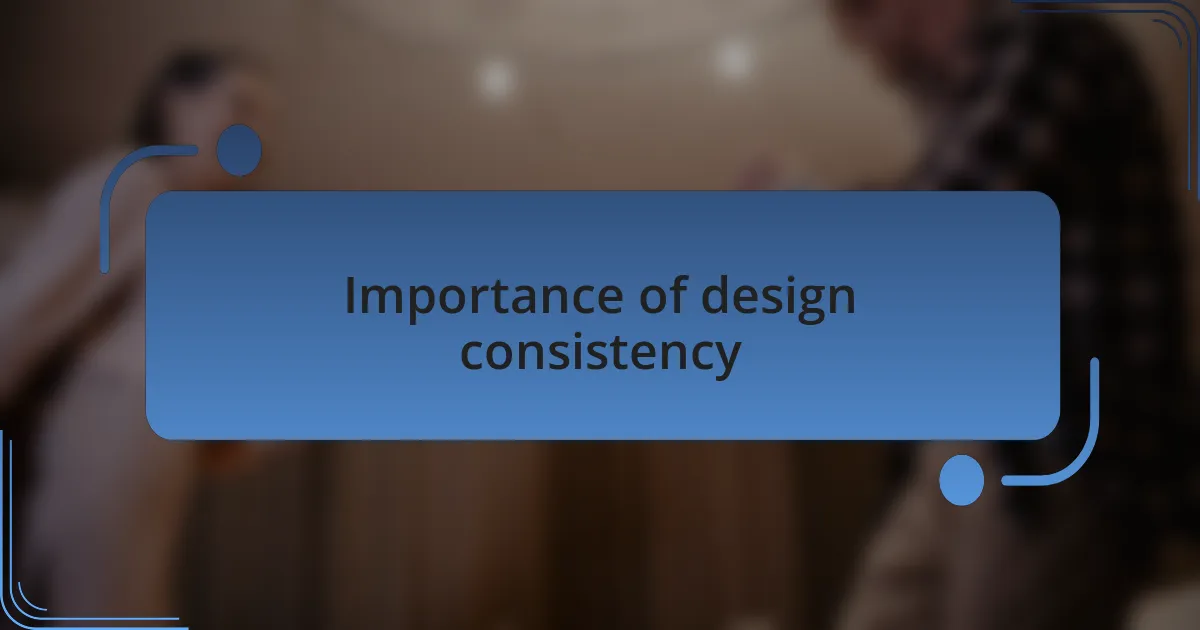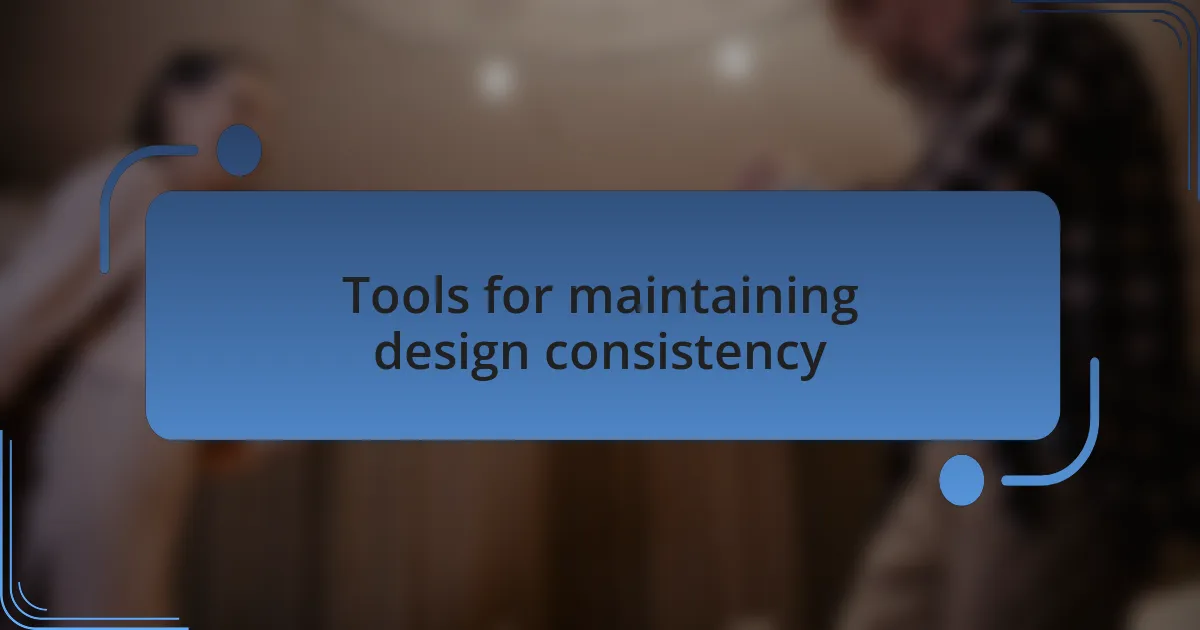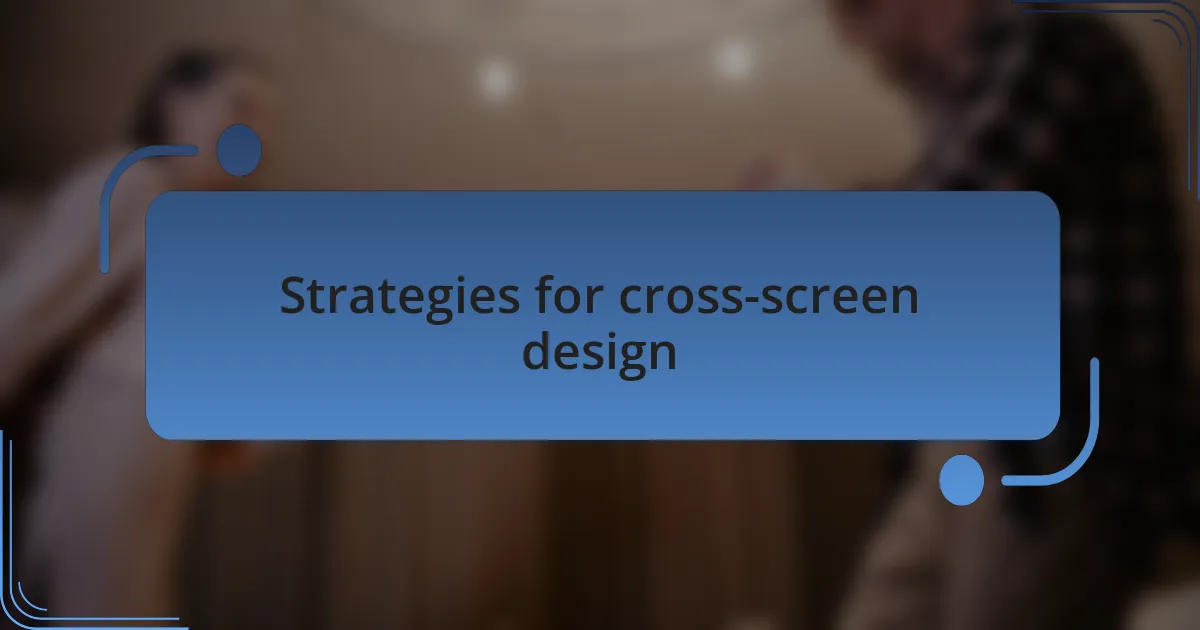Key takeaways:
- Design consistency enhances user experience by ensuring familiarity across different platforms, reducing confusion and increasing engagement.
- Visual hierarchy and contrasting elements improve navigation, guiding users effectively and creating clarity in design.
- Utilizing design systems and style guides helps maintain a cohesive visual language, streamlining the design process and empowering teams.
- Flexible grid systems and responsive typography ensure seamless adaptation across devices, enhancing readability and accessibility.

Understanding design consistency
Design consistency is crucial in creating a seamless user experience across different screens. I remember one project where I underestimated this aspect; the site looked great on desktop but felt disjointed on mobile. It was a wake-up call for me to realize how users could easily get frustrated if elements varied too much between platforms.
Have you ever navigated through a site where each page felt like visiting a different place? That disconnection can leave visitors feeling lost. I found that maintaining consistent colors, fonts, and button styles creates clarity. It’s like having a familiar path that guides users intuitively from one screen to another.
The emotional impact of design consistency also can’t be overstated. When users feel at home on a website, they are more likely to engage and convert. I’ve seen firsthand how a consistent design can evoke trust and confidence, essentially inviting users to delve deeper rather than clicking away in confusion. Isn’t it fascinating how much design choices can influence user emotion?

Importance of design consistency
Design consistency is more than just an aesthetic choice; it’s a fundamental principle that enhances usability. I once worked with a team that challenged the colors and styles across different pages, thinking it would make the site more dynamic. However, as we gathered user feedback, we realized that visitors were confused, which hurt the overall user experience. This taught me how crucial it is to remain unified in design approach, as inconsistencies can severely disrupt navigation.
Remember a time when you wandered through a website that lacked cohesive design? I have encountered that myself, and it left me questioning whether I was still on the same site. It’s in these moments that I truly appreciate the power of consistency. When users see a familiar layout, it reduces cognitive load and allows them to focus on your content instead, creating a smoother interaction that feels welcoming rather than jarring.
Ultimately, consistency plays a pivotal role in establishing brand identity. I vividly recall a client who struggled with brand recognition because their design was scattered. Once we unified their approach, their brand image became much stronger, resonating with both new and existing users. Isn’t it remarkable how a coherent design can bridge the gap between users and a lasting impression?

Principles of effective web design
When considering the principles of effective web design, one cannot overlook the impact of visual hierarchy. I remember a project where I carefully arranged elements on a page, prioritizing critical information in a way that naturally led users’ eyes to what mattered most. The feedback was overwhelmingly positive, as users felt guided rather than overwhelmed. Creating a visual hierarchy isn’t just about aesthetics; it’s about enhancing functionality and ensuring that each element serves its purpose in the overall experience.
Another cornerstone of effective web design is the use of contrasting colors and typography to establish clarity. I once experimented with a bold typeface that stood out against a softer background, and the results were striking. It was fascinating to see how users responded positively to the clarity in navigation. Contrast not only highlights essential elements but also creates an inviting atmosphere where users feel confident in their choices. Can you recall a time when a cluttered website left you feeling lost? That’s precisely what a well-balanced contrast seeks to eliminate.
Engaging users is a vital principle, and storytelling through design can make a significant difference. During one particular project, I wove narratives into the visual components, guiding visitors through an experience rather than presenting them with mere information. The emotional connection that flourished made the website memorable for users. Isn’t it exhilarating when design elements tell a story and create an immersive journey? Approaching design as a narrative not only captivates but also fosters a deeper bond between the user and the site.

Tools for maintaining design consistency
When it comes to maintaining design consistency, I’ve found that design systems are invaluable. They serve as a single source of truth, outlining components like buttons, colors, and typography. In one project, creating a design system saved countless hours, providing a cohesive look and feel across various screens. Have you ever tried to standardize assets only to lose track of which version to use? A solid design system eliminates that confusion.
Another tool that has heightened my design consistency is style guides. These documents encapsulate the essence of your brand, from typography choices to icon styles. I remember crafting a detailed style guide for a client, which not only streamlined the design process but also empowered new team members to maintain the same visual language. It’s amazing how a well-structured guide can inspire confidence and creativity, isn’t it?
Lastly, utilizing design collaboration tools like Figma or Adobe XD has transformed my workflow. These platforms allow real-time feedback and shared access to design files, ensuring that everyone is on the same page. In a recent project, this collaborative effort helped us spot inconsistencies early on, saving us from potential redesigns. Have you ever faced misalignment in a team design task? These tools can truly bridge those gaps, keeping your designs coherent as they evolve.

Strategies for cross-screen design
One strategy that I’ve found particularly effective for cross-screen design is the implementation of flexible grid systems. When I started using a fluid grid in my projects, it was like a light bulb moment. This approach not only allows for the seamless adaptation of layouts across devices but also gives me the freedom to prioritize content without sacrificing aesthetics. Have you ever felt restricted by rigid layouts? A flexible grid system can really liberate your design process.
I also focus heavily on responsive typography. This means adjusting font sizes and line heights based on screen dimensions. I recall a project where I was initially hesitant to change font sizes for mobile but, after some testing, I realized that better readability greatly improved the user experience. It’s empowering to see how such small adjustments can have such a significant impact, isn’t it?
Lastly, I make consistency in color schemes a top priority during the design process. Color plays a pivotal role in brand identity, and I’ve experienced how mismatched colors can create visual dissonance. During a recent website revamp, I centralized the color palette in the design system, which not only saved time but also reinforced brand recognition across all devices. Have you ever considered how color choices can define a user’s perception? It’s fascinating to realize we can evoke emotions simply through well-chosen hues.